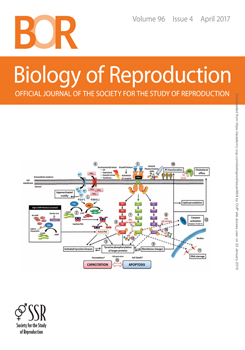The developmental competence of an oocyte is its capacity to resume maturation, undergo successful fertilization, and reach the blastocyst stage. This competence is acquired through interaction with somatic cells of the follicle. Cumulus and granulosa cells support oocyte development, while the oocyte influences follicular cell growth and differentiation. Studies suggest that folliclestimulating hormone and luteinizing hormone play an essential role in oocyte competence acquisition through signaling initiated by protein kinases A and C (PKA and PKC) in granulosa cells. Using a microarray and RT-qPCR, the transcriptome of human granulosa-like tumor cells (KGN) treated for 24 h with forskolin (FSK) or phorbol 12-myristate 13-acetate (PMA) was analyzed to determine the effects of PKA and PKC stimulation on gene expression. Protein-kinase-driven signaling appeared to involve five major upstream regulators, namely epidermal growth factor (EGF), transforming growth factor beta 1 (TGFβ1), vascular endothelial growth factor (VEGF), basic fibroblast growth factor (FGF2), and hepatocyte growth factor (HGF). Gene associations with seven major ovarian functions were identified: Prostaglandin- endoperoxide synthase 2 (PTGS2), interleukin 8 (IL8), and interleukin 6 (IL6) with inflammation; Steroidogenic acute regulatory protein (STAR), cytochrome P450scc (CYP11A1), and cytochrome P450 family 19 subfamily Amember 1 (CYP19A1) with steroidogenesis; Vascular endothelial growth factor C (VEGFC), Vascular endothelial growth factor A (VEGFA), and C-X-C chemokine receptor type 4 (CXCR4) with angiogenesis; Amphiregulin (AREG), epidermal growth factor receptor (EGFR), and sprouty RTK signaling antagonist 2 (SPRY2) with differentiation, BCL2 associated X (BAX), BCL2 like 12 (BCL2L12), and caspase 1(CASP1) with apoptosis, Cyclin D1 (CCND1), cyclin B1 (CCNB1), and cyclin B2 (CCNB2) with division; and Matrix metalloproteinase-1 (MMP1), Matrix metallopeptidase 9 (MMP9), and TIMP metallopeptidase inhibitor 1 (TIMP1) with ovulation. Overall, these results indicate that signaling via both PKA and PKC potentiates gene regulation of functions such as inflammation and apoptosis, while functions such as differentiation, ovulation and angiogenesis are partial to one kinase or the other. These results improve understanding of the pathways underlying the most important changes that occur in the follicle prior to ovulation.
Protein kinase A and C signaling pathways play an important role in various major functions of ovarian follicle development such as cell differentiation, final maturation, luteinization, and ovulation.





